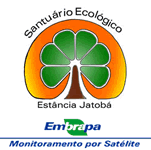

 |

|
|
Home |
Project |
History |
Localization |
Perception |
Publications |
Maps |
WebGIS |
Team |
|
 |
PERCEPTIONPERCEPTION >> SUSTAINABLE FOOD PRODUCTION
A global evaluation of the property is underway to understand the various natural relations of living things in this place. The strongest link between human beings and the rest of the natural world is food. Feasible projects for creating and maintaining a sustainable local food system are already functioning. What is sustainable? This question will be part of an ongoing debate that will continually shape the agriculture. What are the social consequences of the project? The moral consequences? These and other questions must also be addressed. As a beginning, the American poet and naturalist Henry Thoreau's consideration will be adopted. That is, an activity would be "sustainable," if its cost was worth the amount of "life which is required to be exchanged for it, immediately and in the long run." In this case, "life" includes plant and animal life lost directly or indirectly, time spent by humans, animal and plant diversity lost which limits potential life, and so forth. The American agroecologist Stephen Gliessman has given a practical definition that means, in part, that food production should "have minimal negative effects on the environment and release no toxic or damaging substances into the atmosphere, surface water, or ground water; preserve and rebuild soil fertility, prevent soil erosion, and maintain the soil's ecological health." Also sustainable implies the use of "water in a way that allows aquifers to be recharged and the water needs of the environment and people be satisfied." In addition to soil care, it implies maintaining crop diversity, using natural pest control, facilitating local economy, fostering good relations with neighbors, in general, preserving the health of the land and those living on it. Pollution of air, soil and water from agriculture practice has already been eliminated. No pesticides, herbicides, nor chemical fertilizers are used on the property. Treatment of existing orchards consists of what is currently considered "organic." The management goal is to fortify the fertility of the soil, encouraging a strong and balanced self-controlling ecosystem. Natural wind barriers are utilized. The incorporation of nitrogen-fixing legumes cut and incorporated, in place, as well as bio-fertilizer composts are employed. Two varieties of oranges, limes, and other fruits have been certified for sale as "natural" or "organic" products by one of the country's leading licensing agencies. An experiment with an organic integrated system for chicken and egg production has begun. Also, cattle have been raised organically on the property for some time. A workshop and greenhouse for maintaining a seed bank, cultivating seedlings, is an important center of activity. Not merely germoplasm collections will be maintained. Selected species will be kept as living representatives so that the process of maintaining and creating genetic diversity can take place in this ambience. The practical aspects of maintaining diversity are especially important as more and more food is produced by fewer and fewer species. There are estimated to be some 75000 edible plants that could be utilized for human consumption. To date, only 3000 have been explored. One hundred and fifty have been cultivated on a large scale. Twenty of these produce 90% of food currently consumed. Wheat, rice, corn and barley account for half of the world's grain production. Seventy-percent of potatoes one can buy in the supermarket come from only four varieties. Ninety-percent of chicken eggs in the United States are produced by white leghorn hens. This situation prompted Stephen Gliessman to remark, "We are coming very close to putting only one egg in all our baskets." In planting vegetables, nuts, flowers and mixed orchards special attention is being given to facilitating the natural symbioses between plants so as to optimize land use and minimize production lost to pests. Something that worked somewhere else will not be adopted without proper evaluation for this place, at this time, under existing conditions. In every case, "Everything in its right place" guides experiments. One project that both preserves rural values and also encourages the local economy is planting some forty acres in conjunction with a neighbor on his adjacent land. We are planting "organic" corn and soy, both of which are needed for organic meal to feed chickens and cows. Until now, there have been no local organic grain growers. By working together, our cooperation enhances good neighbor values. By growing and selling locally, the economy is stimulated. By reducing road and petroleum fuel use, the environment is healthier.
|